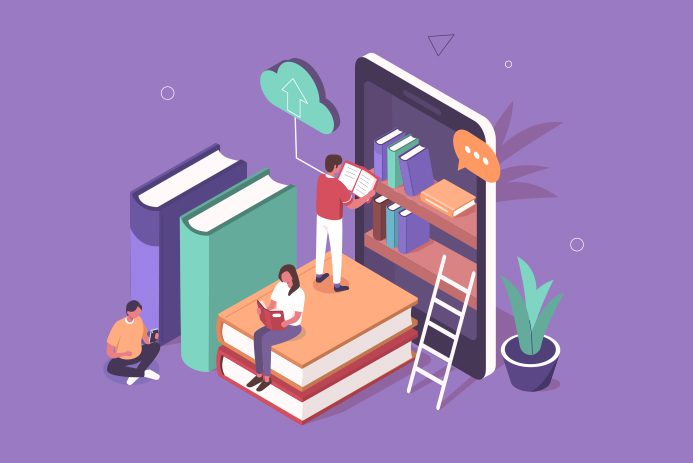Traditional classroom methods of teaching and learning are now being facilitated online by these technological advances. Teachers and students can use a laptop, tablet, or smartphone to access learning plans, submit work, and conduct and take part in class discussions. Remote access software that allows its user to remotely access a device from another device in real-time is an enormous help to educational facilities all over the world.
We often associate learners with primary and secondary school, but universities have been using remote access solutions as a response to COVID, too. Students of all ages need solutions that work for them.
The need for students and educators to connect to university devices and computer labs from their own laptops through remote access is just as prominent. Graphic design and computer science students in particular often need to access powerful and more expensive computers when their home laptop simply isn’t enough.
Obstacles to student success
There are, of course, challenges which remain for pupils of all ages.
One of the largest barriers to education right now has been a social divide made more prominent in a time when caregivers are facing severe job insecurity and students are not allowed to physically attend school or university. This looks like:
- Digital inequality, such as lack of access to internet and devices at home
- Availability of resources such as computers or tablets
- Difficulty adjusting learning and teaching styles
- Amount of support and input from caregivers
- Poor communication between educators and learners
Increasing social and digital divides are isolating millions of the poorest members of our society, with devastating effects. Many parents are left facing the choice between food and data so their children can continue to learn remotely.
Without access to a computer in the home, siblings are forced to share one phone between them to take part in their lessons. These disparities, dependent on age, socioeconomic status, region, and those with disabilities are not new, but have only got worse since COVID changed everything.
Children from disadvantaged backgrounds are being hit the hardest, with the greatest disruption to their education, as they are much less likely to have the internet connections and devices required to access their coursework. And school closures have further widened the attainment gap.
The lost education and opportunities for the most vulnerable has made digital exclusion a catastrophe during lockdown.
Luckily, many of these issues are being overcome. A lot of these challenges are being worked through with greater access to technology via the schools, local councils, and the government.
Teachers are working hard to alleviate the pressures of different learning styles by using remote access to modify their teaching methods and include things like video links shared from their screen to the class as well as giving their students flexibility to get their work finished in the way that works best for everyone.
They are advocating for their students, delivering free meals and paper copies of work to help alleviate financial burdens, lobbying to get computers and tablets into homes without them, and giving extra digital skills help to those students whose families aren’t familiar with the online platforms. There are no more homework clubs during lockdown.
Solutions to reduce learning challenges
Here are some of the solutions that are contributing to remove some of the obstacles and make online education more accessible to every student:
- Smart phones, which can support screen-sharing software as well as a computer or laptop.
- Free data to family in need, provided by the Government in partnership with leading mobile networks.
- Electronics provided by schools to pupils, as well as printed resources.
- Collections of second-hand laptops and tablets from charities and community groups, to be distributed to students who need them.
These methods are making the difference – the quality of work students complete from home is just as high as before the pandemic.
Perhaps implementing this knowledge into new learning plans over the next few months will create space for blended learning when things are back to normal.
If students are still being given the tools for academic success online, systems like remote access can continue to advance such achievements.
How a remote access solution can help online learning
The educational benefits of remote access software include:
- Increased interaction between pupils and their teachers because of the ability for educators to remotely control their lessons from anywhere.
- Screen sharing eliminates the need for expensive interactive equipment, saving money for institutions.
- Remote access software like VNC Connect can help visually impaired students to regain their independence, fostering confidence and better learning outcomes.
- Ease of use, so that everyone involved in the education process on both ends can quickly connect and start learning.
- Increased interaction, important for everyone involved when the nature of relationships has shifted so greatly.
Ready for a trial?
Remote education isn’t going away. A strong, secure, and accessible remote access solution needs to be in place for schools and universities around the world. And while we cannot solve the inequalities of digital exclusion, once students and educators have access to a device at home, remote learning becomes a lot easier with the addition of remote access. One thing is for sure: the pandemic will have a lasting effect on the way we communicate.
RealVNC provides secure, cross-platform remote desktop, so it works across any device and operating system while meeting compliance with industry standards.
There is no need to download any sort of new applications for learning; simply connect and remotely use the same programs you’re used to using. Save time and money by providing ad-hoc tech support from the comfort of your own home.
Start your free 14-day trial today to see for yourself how VNC Connect can help you with all your educational needs.













